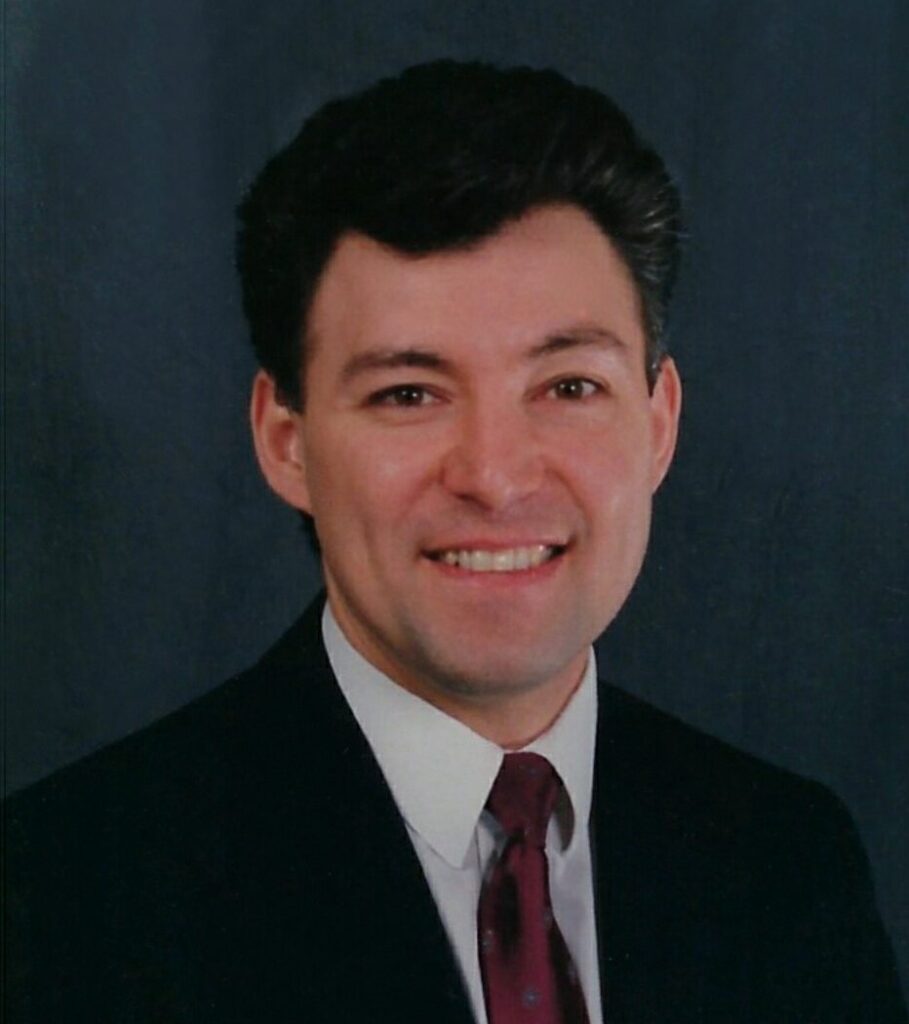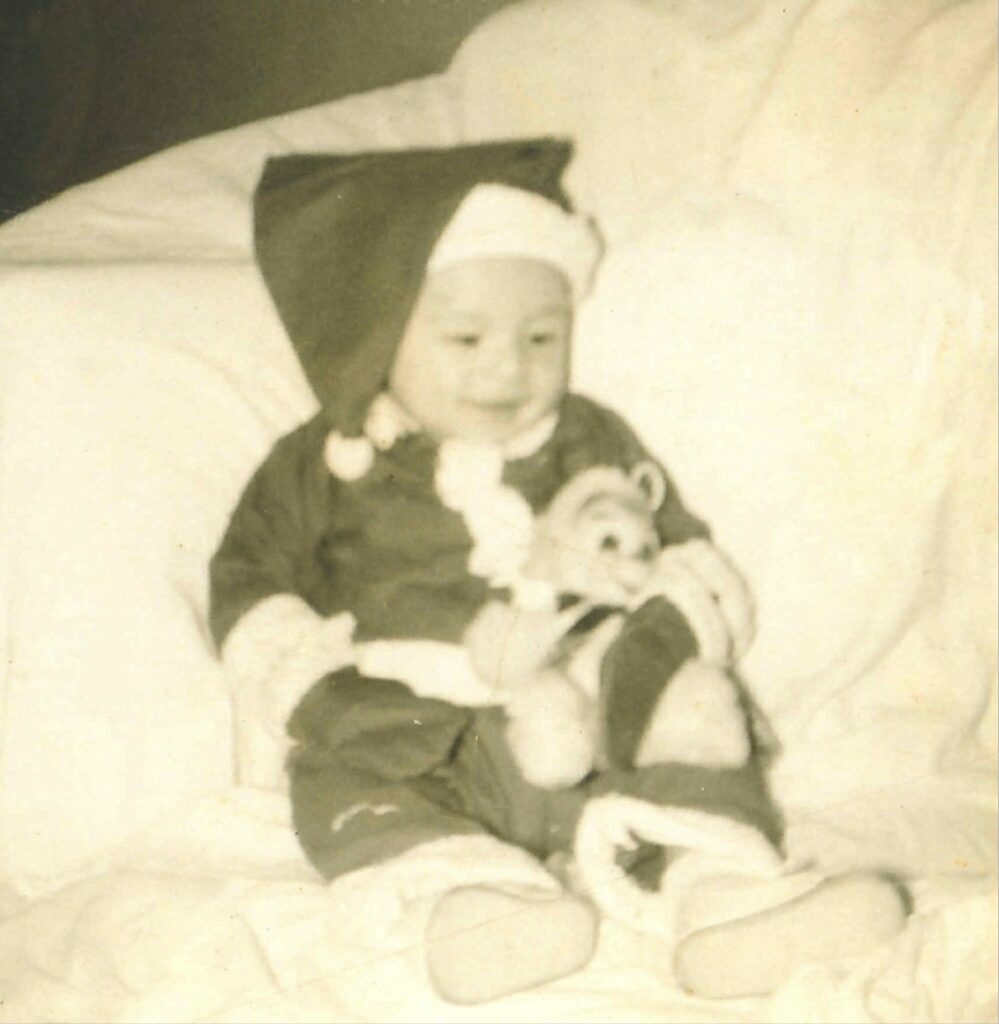
INTRODUCTION
My story, like that of every human, is a sacred saga. Every step in my life path shaped my perspective and views, gave me knowledge and tools, and led to me dedicating to building and promoting my program. I hope you read on and gain perspective, inspiration, and optimism about our magnificent human family’s future.
Above all, I hope my story earns your trust.
I was blessed to start life in a close, loving family with strong values and high expectations. At a young age, I got into sports and reading history, math, and science. In high school, I played baseball and started playing guitar. After graduating high school, I entered Purdue University. During my third year, I left Purdue, got a steel mill job, and dedicated to building a music career.
After two years of ups and downs trying to form a group, luck came my way. I got an audition and was welcomed into Free Verse, a group that had disbanded and was re-forming with serious plans. Six months later, I left the mill behind and set out with Free Verse to play covers in Top-40 clubs scattered across the Midwest. After two years on the road, we returned to Chicagoland and from then on played only in and around the Windy City.
In 1986, while still playing full-time at night, I enrolled at Purdue’s Northwest Indiana satellite, and in 1990 finally received my long-delayed bachelors degree. During my last year at Purdue, I became Cash Manager of the City of Gary, where I got my first investment experience. In 1991, I said goodbye to the team at Gary’s City Hall and entered the University of Chicago’s MBA program. I graduated two years later and entered First Chicago Capital Markets, the largest investment bank in Chicago, which eventually became part of JP Morgan Chase, the largest investment bank in the U.S.
Working in capital markets is the equivalent of taking final exams all day every day. In this remarkable regimen I learned how the machinery of geopolitics, international institutions, think tanks, government, economics, business, education, science, technology, culture, religion, art – how the machinery of the whole world connects. My teams consumed massive information of every imaginable nature to decide where to move multimillions moment-by-moment 24/7 across five continents. In the course of this work I gained the bulk of experience and tools with which I am shaping my program.
In 1997, I left First Chicago to move my family to sunny Orange County, California and began the second phase of my career working in the finance department of four consecutive Fortune corporations. In 2012, I retired from my corporate career and moved to San Diego County. Since retiring I’ve focused on playing music and taken on a few professional projects.
Even after a lifetime being told by family, friends, and associates that I should enter politics, I never imagined doing so. I was more than challenged and satisfied with my corporate globetrotting, music, and family.
After the 2024 elections, people around me again told me I should run for office, so I surveyed San Diego’s political landscape.
Up to then I’d been a radical centrist who never considered registering as a voter aligned with any political party. I simply voted for candidates I felt were best qualified regardless of affiliation.
Since 2016, the Democratic party had shifted further away from me in the center. On the other hand, the voters and leaders of the old Republican Party had kept the name, but had abandoned their historical values and policy positions. For the first time in my life I registered as an affiliated voter, on the left.
San Diego County includes the 48th Congressional District of California, which is one of the state’s few hard-right strongholds. The odds for a newcomer like me to win the Democratic nomination were low, and the odds for any Democrat to win the district were also very slim. But here was opportunity. If I beat the odds, I would remove a congressional vote from the mutated opposition and hand one to the constitutional Democrats, a two-vote shift at a time when control of the house teetered on a razors edge. If I ran, I’d start out with small but loyal support of friends and family. If I had the honor of serving, it would meaningfully deepen my legacy. Last but not least, the name recognition, contacts, and experience gained campaigning could launch some other exciting encore to my career.
I started exploring.
My first step was to attend a Poway Democratic club meeting in February. Bleakness hung over the meeting. As the officers finished speaking, I stepped up and asked the president to introduce me. He announced my name. I stood on a chair and swung hard. I reminded everyone of mankind’s amazing ascent and America’s amazing achievements. I pointed out that a Democratic victory in 2024 could have triggered a stronger anti-constitutional reaction from the opposition than on January 6, 2021. I fielded questions. My favorite was, “What are the chances a political novice like you can win.” My answer, “Have you ever heard of a person with no political experience becoming President of the United States?” Everyone laughed. In five minutes the room had transformed. When I stepped down from the chair I was met by a line of people thanking me and encouraging me to get busy campaigning.
I got very busy.
Over the next three months I spoke at a dozen other meetings and events, registered as a candidate with the FEC, opened media pages, held events, walked the district, rented a booth at the Fallbrook Avocado Festival, attended an un-chaired town hall meeting, did research, designed a policy program, and strategized.
In mid-May, I completed a Times of San Diego questionnaire which they published along with those of three other Democratic candidates. Among the respondents, I believed I had made the best case for myself.
Everything changed the night of May 22. While exercising, I suddenly felt weak, followed immediately by intense chest pain. The symptoms were unambiguous. I dialed 911 and lay down on a sidewalk. Fifteen minutes later an ambulance dropped me off in the emergency room of Scripps hospital in Encinitas. Five minutes later I passed out the first of three times.
A surgical team was called in, they immediately operated, and saved my life.
The next day was a blur of naps and visitations. The second day after the event, my natural assumption was that my campaign was over. But a surprise awaited at home.
The day I was released, I read a followup Times of San Diego story saying I was the candidate best positioned to win the Democratic nomination. My adrenaline resurged, and I surprised myself by deciding immediately to stay in the race. A week later I was again busy campaigning. In July, I participated in candidate interviews for a local TV news broadcast. During the interview I felt a bit unfocused. Fortunately it wasn’t live, and the studio edited the interviews down to everyone’s best moments, so on TV I came off well.
Finally, I faced a moment of truth one August morning. I was scheduled to participate in a San Diego Democratic party event that evening. Three factors made my decision to bow out. First, my recent heart event was a serious issue my political opponents could legitimately exploit. Second, the odds of any Democrat winning in the midterms in such a red district were extremely low. Lastly, I now believed that I could do better service by redirecting to political messaging.
So here I am.
This site is my messaging launchpad. I’m in an intense development phase. My goal is to fully-form the site and my YouTube podcast channel by early-2026, keep charging, and have a meaningful impact on the November midterms and beyond.
My movement’s critical center will be the Program page, where I will prescribe policy on topics of primary impact.
And now I back up to share the 67-year trail that got me to this place.
CELEBRATED ARRIVAL
Lupe Santillan was born on July 25, 1939 in Saint Catherine Hospital in East Chicago, Indiana. On July 21, 1958, Lupe, now a Mora, delivered her first child in the same ward. The hospital staff crowded the ward to celebrate my arrival because Lupe had worked in the hospital’s billing department for years, and her mother was by then a local celebrity. Tillie Santillan was known across Northwest Indiana for her tireless community work, political activism, and local column,Tillie’s Corner. After washing me, a nurse introduced me to the gathering through the glass, who clapped. Actually I don’t know if they clapped but it sounds good.
The staff called Inland’s Steel’s 76-inch mill, one mile away, where Jaime Mora was sitting 30-feet in the air operating a gantry crane, loading steel into 100-ton train cars. His foreman appeared below and waved him down, “It’s a boy! Get outta here!” Jaime parked the crane, slid down the three-story rail, and sprinted to the exit. Minutes later he entered the maternity ward in his steel mill blues with “Jimmy” tag on his shirt, a familiar sight at Saint Catherine. Female staff congratulated and fawned on the handsome devil. Jaime kissed Lupe, waved at me through the glass, headed home, filled the tub with ice and beer, gathered the gang, and they celebrated until morning. Next day, everyone reported to the mill hungover. Those were different times.
This was my propitious start. Or so I’ve been told. I wouldn’t remember.

GROWING UP
My earliest memory is of lying on Mom’s huge bed and her beautiful green eyes smiling down as she tickled my tummy and sang, “Jeepers creepers, where’d you get those peepers, jeepers creepers, where’d you get those eyes.” I laughed so hard my body bounced! Everything was familiar and safe. I wish every child felt this.
I was followed by two sisters, each a year apart. Life was more formal then, and I remember us walking to church, Mom in dress and heels, my sisters in matching dresses, Dad and I in suit and tie. Wherever we went, people complimented Mom and Dad’s elegance and fawned over their well-behaved children. We’d better behave. Mom and Dad dealt affection and consequences in instant, equal portions.
We came up in the tumultuous 1960s. Exploding population. Booming economy. Big cars. Epic movies. TV sitcoms. Revolutionary music. Drugs. Riots. Vietnam. Draft-dodging. Assassinations. Like millions of their generation, I remember Mom and Dad at times feeling overwhelmed watching TV news. The greatest tragedy I recall was the JFK assassination. To their credit, Mom and Dad cultivated wholesomeness at home for their children and our many visitors.
A major highlight of our childhood was summer trips to Dad’s hometown, Sahuayo, Michoacan, Mexico. Sahuayo’s colonial plaza, mountainous backdrop, street fests, and Dad’s handsome, colorful, thriving family made for magical adventures. The other big light of my childhood was baseball. Dad and I went often to Chicago Cubs and White Sox games. I practiced endlessly bouncing rubber balls off walls, became a good fielder, and made Little League All-Stars. Dad, Mom, and my sisters went to all my games and I loved it.
My secret childhood dream was to marry a beautiful girl from Sahuayo, bring her to Chicago, and play shortstop for the Sox or Cubs.
Then came the dark ages, junior high. Northwest Indiana’s mills drew workers from across the U.S. and every corner of the globe. The ethnic soup, teen hormones, and terror of growing up turned us into smelly monsters. Possessed, even I sometimes needled teachers. I would announce on day one that I planned to earn an A in every class by scoring 90 percent and no more. Not that I rattled anyone – the teachers had far worse to deal with. I did pull lots of close-As, but not by design.
I attended East Chicago Washington High School, followed by my sisters. ECW was known for competing every year for the state basketball championship, and for its multiethnicity. The school had a tough reputation, but that was not the whole story. Most students got along well, and the school had many excellent faculty who sent a significant percent of graduates to college, including my sisters and me.
I had a great freshman baseball season, then missed sophomore year with an injury, which led to two lackluster seasons. It didn’t matter. I had started playing guitar during sophomore year, and my baseball dream was replaced by the dream of becoming a professional musician.
I finished high school with a B average, which disappointed my parents and school counselor but didn’t bother me, because I got As in my favorite subjects, history, math, and science. I scored well on SATs, and with the endorsement of my math and science teachers, received a full-ride four-year engineering scholarship to Purdue University.
Now is a good time to go back to my family origins before moving into my college and music years.
THE MORAS
Above-mentioned Sahuayo, Michoacan, Mexico is a small city tucked high in the Sierra Madre mountains 90-minutes from Guadalajara in Southwestern Mexico. Sahuayo is long-known for its spectacular mountaintop views, magnificent plaza, wealthy families, bustling neighborhoods, endless festivals, delicious food, and above all for its beautiful women. If that sounds trite, Google it.
The Mora family migrated from Spain to Sahuayo in the 1800s and by the 1930s thrived as merchants and socialites. Their businesses included a machine shop, leather goods shop, furniture store, and clothing store, and took up half of one side of Sahuayo’s plaza. The Mora hacienda took up the other half of the block—the best real estate in town. During the early-1950s Mexico’s economy modernized, tastes changed, and the Mora shops, still offering outdated, expensive custom-crafted wares, collapsed.
Determined to get a fresh start, Grandpa Juan sold the family businesses and properties, hired a caravan of trucks, packed them with a century of possessions, and headed with wife and ten children for Mexico City. The move turned out a spectacular disaster. Juan was never fully paid for the family assets, and the truck caravan disappeared on the way to Mexico City. The Moras arrived in the Capital financially and spiritually devastated. This was plight.
The Mora diaspora followed across Mexico City and the rest of the country, and Grandpa Juan left to find work in the U.S. By this time Jaime had befriended the family that owned one of Mexico’s top movie studios, Clasa. He hung out at the studio and made himself useful, first running errands, then constructing sets. Eventually he auditioned for parts but was never cast. Every time he was too young, too old, too short, too tall, too handsome. He spent his sixteenth and seventeenth years mixing time at the studio with every sort of odd job and sleeping wherever he was offered a spare bed. Imagine the impact on a young person going from a hacienda to this.
Grandpa Juan’s brother Alejandro had lived in East Chicago, Indiana for several years working at the largest metal factory on Earth, Inland Steel. One day Jaime received a letter from Alejandro inviting him to visit East Chicago. Jaime took the letter to the U.S. Consulate, got a visa, and soon after was on a bus heading to Nuevo Laredo on the Texas border. With visa and letter in hand, Jaime walked through customs into Laredo and got on a Greyhound bus destined for Hammond, Indiana, next door to East Chicago.
Three days later Alejandro picked Jaime up at the Hammond train station, took him home, and bunked him on the couch. Jaime was a few months short of the minimum hiring age, so for the first time in his life he idled for a while, shooting pool, discovering theaters and dance halls, admiring beauties walking Main Street. Jaime’s favorite new American pastime was going with Alejandro to Cubs and White Sox games in Chicago.
On June 19, 1953, Jaime turned 18, and Alejandro took him to the Inland Steel employment office on Watling Street. For the umpteenth time Alejandro introduced a Sahuayense at the office, and Jaime handed in his application. Next day, Jaime received his green card, arranged by the mill. Another day later, Jaime walked through the mill gate for the first time to join the labor gang, where he would bake two summers and freeze two winters before moving up the ladder to the 76-inch department’s shipping dock.
THE SANTILLANS
Grandma Tillie Santillan was a force of nature ahead of her times. She married young to a man who died. And another. Her third attempt at widowhood failed, as #3 survived her. She bore ten children. Her parents owned a three-story apartment building where they borded Mexican steelworkers. Tillie was beautiful, spoiled, well-dressed, and precocious. She spoke perfect English and Spanish. She played guitar and sang at festivals. She organized political events and endorsed candidates. She wrote local gossip and gave sassy advice in herTilllie’s Corner news column. She enjoyed life. Her challenge was raising ten children while working and social butterflying.
Through junior high school, Lupe had loved school and been popular with students and teachers. Her voracious reading made classes easy, and shortcut her development straight from child to adult. Here favorite stories were of European, Roman, Greek, and Egyptian royalty. By the time Lupe was a freshman at East Chicago Washington high school, in her mind she was a royal misplaced among troglodytes.
One day in class Lupe’s teacher noticed that she was not engaged, and sent her home. Over a short period, Lupe’s personality reverted to a 10–year-old who had difficulty speaking and socializing. For the next year, Lupe was kept home and shuttled back and forth to University of Chicago hospital, who studied her brain and treated her. She deteriorated to the point that one day U of C sent her home to receive last rites. That night, a Catholic priest led Grandma and her friends in all-night prayers. Lupe survived the night, and gradually recovered over several months.
Or I wouldn’t be here. Was Lupe’s recovery a miracle? The fact that I exist is such a miracle that I believe anything is possible.
Lupe returned to Washington High one morning, but halfway through first period she walked out, never to return. Years later she told me that she had left because she felt confused and out of place.
Lupe staying home was a windfall for Tillie. Now she could flitter across Lake County while Lupe reared her eight younger siblings.
LUPE AND JAIME
One day while playing snooker in a pool hall on Main Street, Jaime heard men talking about La Guera, East Chicago’s fair-skinned beauty. Her grandfather was Don Manuel Hernandez, a veteran of the Mexican Revolution. In fact, Manuel owned the pool hall they were in. The back door was left open to let in a breeze, and at some point laughing female voices approached. Everyone turned to look. Three beautiful young women in dresses walked past, followed by the prettiest girl Jaime had ever seen. Tall, slender, with wavy reddish hair and green eyes, she could be Lucille Ball’s twin sister. No one had to tell Jaime who she was.
On weekdays Lupe worked in Saint Catherine’s billing office and on weekends she sold flowers at ballroom dances. One Saturday a stunningly handsome young man bought a flower, gave it to her, introduced himself, and made a quick retreat. Soon afterwards the two crossed paths on Main Street. They stopped in front of Woolworth’s dime store, Jaime waved toward the entrance, smiled, and said, “Te invito una Coca-Cola?” She smiled and said, “Sí.”
Lupe and Jaime had an instant compatibility. Elegance. Jaime had been raised in wealth and dressed and acted the part. The well-read idealist, Lupe dressed and presented herself with cultivation. They were both outstanding ballroom dancers. Their three-year courtship was a string of dates in dance halls across Chicagoland.
Lupe and Jaime knew Tillie wouldn’t want Lupe to leave her to raise the kids, so they eloped. Naturally, Lupe’s family loved Jaime. Grandpa Manuel and Grandma Isabel loved swapping stories with Jaime from the old country for hours on end. Lupe’s siblings were surprised that anyone had captured their dreamy sister’s heart. Best of all, Tillie came to love Jaime most. She appreciated his cheerful personality, gentlemanly manners, and especially how much he and her daughter were in love.
For their part, Alejandro and Juan loved Lupe just as much. She was beautiful. She spoke excellent Spanish and cooked genuine Mexican meals learned from her grandparents, along with endless recipes from her Betty Crocker cookbook collection.
By the time we kids came along, Mom had become matriarch to Jaime’s family as much as to hers. Mom was the ideal wife of her generation. She loved her husband and children, and took pride in serving us and keeping our home clean and tidy. She was classic, dignified, and social. Lupe and Jaime were a dynamite couple who reminded everyone of Desi Arnaz and Lucille Ball.
[More on the Mora family.]
COLLEGE
I entered Purdue University in the fall of 1976 and dropped out in the fall of 1978 convinced that I could never fit in with the engineering culture and on fire about my blooming guitar skills. Students at Purdue who heard me play typically said, “You’re a rock star. If I were you I’d quit school and form a band.” When I drove off campus I was convulsing with guilt over leaving my scholarship behind, terror of the upcoming conversation with my parents, and hope that my crazy music dream could come true.
FREE VERSE
After Purdue, I went straight to work, at Inland Steel, this time as a laborer and no longer as an engineer because I had dropped out. I bought my first electric guitar and amplifier. I told friends, “I’m in competition with millions trying to become rock stars, and vastly more people get PhDs than the number who make their living playing music, so I’m gonna work harder than any guitarist or PhD student in the world.” And I did.
I formed two bands in a row that played well, but none of us was a strong singer, so we quickly dissolved. During this time I had made friends with Mario Moreno, ex-lead guitarist of Free Verse, a local band that had formed in the early-70s, won the Chicago FM Loop Radio Battle of the Bands in 1974, and disbanded in 1976. In 1979 I caught a break. Mario told me Free Verse was re-forming, and he had given them my phone number. Shortly after, they called and three original members auditioned me in my basement. I played and trembled and talked for about 20-minutes while they sat in chairs, frozen. I had no idea what they thought. That night they called to tell me I was in. Fireworks went off in my head! I felt fantastic!
[Coming: Story of Free Verse, returning to Purdue, and graduating Purdue.]
—
On the day I received my masters degree from the University of Chicago in 1993, I felt – as the great Lou Gehrig said and so many have felt – that I was the luckiest person on the face of the Earth.
{Coming: University of Chicago and career.]
—
I’m 67 as I write, and more grateful than ever. I’ve survived two heart attacks. I enjoyed two parallel careers – business and music – while celebrating the joys of family.
—
So much more to come.


